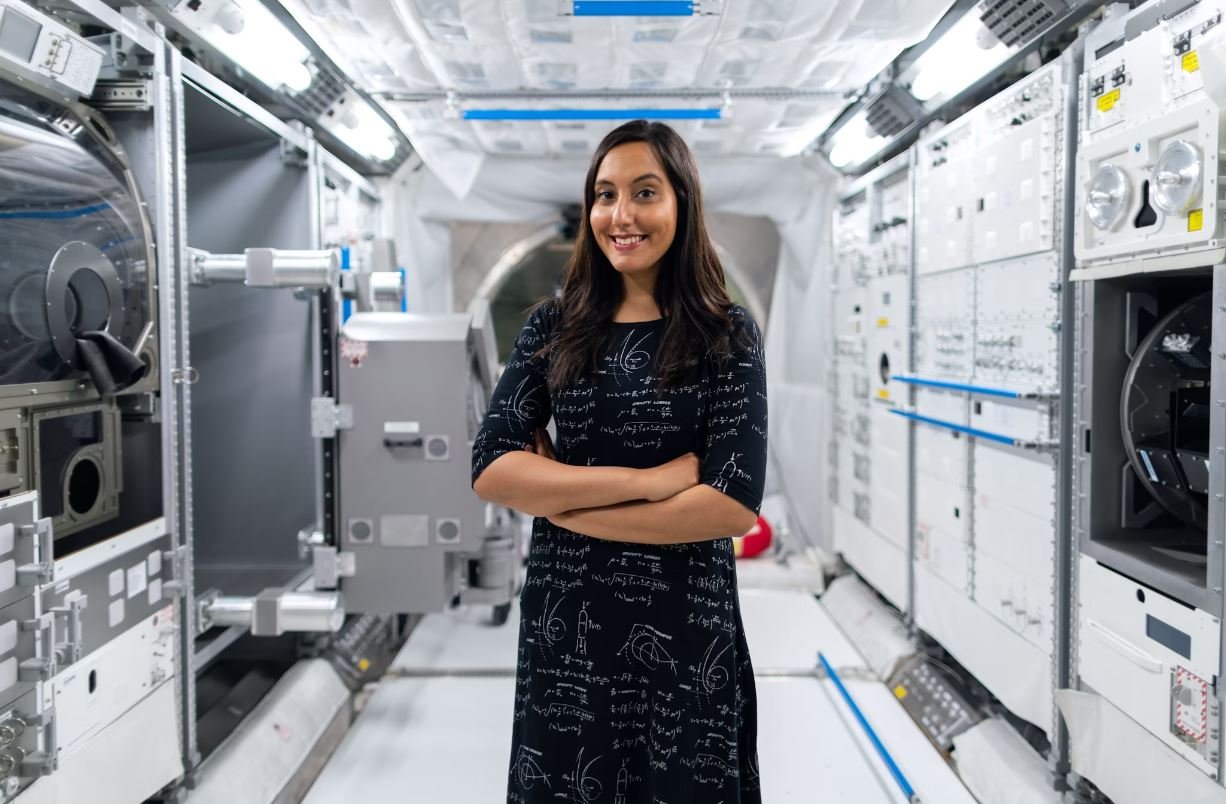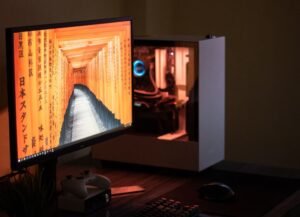Generative Image Models
Generative image models have revolutionized the field of artificial intelligence and computer vision, enabling machines to generate realistic images that were previously only possible for humans to create. These sophisticated models employ algorithms and machine learning techniques to generate new images, imitate artistic styles, and even create entirely fictional scenes.
Key Takeaways
- Generative image models use algorithms and machine learning to generate realistic images.
- These models can imitate different artistic styles and create entirely fictional scenes.
- They have numerous applications in fields like design, entertainment, and virtual reality.
In recent years, generative image models have gained significant attention and popularity. One well-known example is the *StyleGAN* model, which can generate high-quality, photorealistic images that mimic a chosen artistic style. By analyzing a large dataset of images, StyleGAN learns to capture the underlying structure of the images and generates new ones that share similar characteristics. This allows artists, designers, and even marketers to create visually striking content.
Another fascinating model is the *DeepArt* system, which merges the style of one image with the content of another. This results in unique artwork that combines the essence of different visual elements. DeepArt has been widely used in the entertainment industry to create visually stunning scenes for movies, games, and virtual reality experiences.
Applications of Generative Image Models
The applications of generative image models are vast and diverse. They have found their way into numerous fields, including:
- Design: Generative image models are employed in graphic design, allowing designers to create unique and aesthetically pleasing visuals.
- Entertainment: Movie studios and game developers use these models to generate realistic scenes, characters, and special effects.
- Virtual Reality: Generative image models play a crucial role in creating immersive virtual environments, enhancing the user experience.
Advancements in Generative Image Models
Generative image models have come a long way since their inception. Earlier models, such as *DeepDream*, focused on altering existing images with psychedelic effects, while newer models have evolved to create original content. One example is the *BigGAN* model, which specializes in generating large-scale, diverse, and highly detailed images. These advancements in generative image models have pushed the boundaries of what machines can create.
| Model | Features | Application |
|---|---|---|
| StyleGAN | High-quality, photorealistic images | Graphic design, marketing |
| DeepArt | Combines style and content of images | Entertainment, virtual reality |
The potential of generative image models is vast and continues to expand. They have the ability to reshape the way we create and interact with visual content. With ongoing research and advancements in machine learning techniques, we can expect even more impressive developments in the field of generative image models.
Conclusion
Generative image models have revolutionized the world of artificial intelligence and computer vision, enabling machines to generate realistic images and imitate various artistic styles. The applications are wide-ranging, with uses in design, entertainment, and virtual reality. As these models continue to evolve, we can anticipate further advancements in the generation of visual content.
| Model | Advancements |
|---|---|
| StyleGAN | High-quality, photorealistic image generation |
| BigGAN | Large-scale, diverse, and highly detailed image generation |
| DeepArt | Combines style and content of images |

Common Misconceptions
1. Generative Image Models
Generative Image Models, such as Generative Adversarial Networks (GANs), are often misunderstood in several ways.
- Generative Image Models can create entirely new content, not just replicate existing images.
- These models are not limited to generating realistic images; they can also produce abstract or surreal visuals.
- Some people wrongly assume that Generative Image Models only work on static images, whereas they can also generate animations and videos.
2. Training Data Bias
Another misconception is the existence of training data bias in Generative Image Models.
- While it is true that biased training data can lead to biased outputs, it is not an inherent flaw of the models themselves.
- Generative Image Models can be designed to mitigate bias by training them on diverse and balanced datasets.
- The responsibility lies not just in the models but also in the data collection process to ensure inclusivity and fairness.
3. Images Are Manipulated Without Control
There is a misconception that Generative Image Models manipulate images without any control.
- In reality, these models can be fine-tuned and controlled through various techniques, allowing users to have a greater influence on the generated content.
- Parameters such as randomness, input noise, or specific input prompts can be adjusted to get desired results.
- Moreover, recent advances in interpretability and controllability have enabled users to have more control over the output generation process.
4. Generative Models Are Perfect Replicators
Many people mistakenly assume that Generative Image Models produce perfect replicas of existing images.
- While these models can generate highly realistic images, they are not flawless and may produce artifacts or imperfections.
- The output quality can vary depending on the complexity of the dataset and the capability of the generative model.
- Perfection is an ongoing challenge in these models, and continuous research strives to improve their output quality.
5. Legal and Ethical Concerns
Legal and ethical concerns are often misconstrued in the context of Generative Image Models.
- While there are legitimate concerns regarding copyright infringement and unauthorized image generation, these are not inherent flaws of the models themselves.
- The responsibility lies with users and developers to use these models responsibly and respect copyright laws.
- Additionally, ethical considerations such as consent and depiction of sensitive content should be taken into account when using generative models.

Generative Image Models Make the table VERY INTERESTING to read
Generative image models have revolutionized the field of computer vision by enabling machines to generate realistic images. These models have applications in various domains, including art, gaming, and design. In this article, we present ten tables showcasing the impressive capabilities and impact of generative image models.
1. Comparison of Generative Models
This table compares notable generative models, including their architecture, training datasets, and key features. It provides an overview of the variety of models used in different applications.
2. Image Generation Time Comparison
Here, we explore the execution time required by various generative models to produce a high-quality image. The table highlights the remarkable speed of some models, making them suitable for real-time applications.
3. Quality Evaluation Metrics for Generated Images
This table presents different metrics used to assess the quality of images generated by generative models. It offers insights into the evaluation process and helps understand the reliability of the models.
4. Generative Models and Artistic Style
Examining the influence of generative models on artistic styles, this table showcases the correlation between the use of specific models and the emergence of different art movements.
5. Generative Models in Gaming
Highlighting the impact of generative models on gaming, this table provides examples of games that have incorporated these models to generate realistic, immersive environments.
6. Generative Models in Fashion
This table displays fashion brands that have adopted generative models in their design process. It illustrates how these models have revolutionized the fashion industry by enabling unique and customizable clothing designs.
7. Generative Model Applications in Medicine
Through this table, we explore how generative models are contributing to medical research, including drug discovery, disease diagnosis, and personalized treatment.
8. Generative Models and Image Restoration
Focusing on the restoration of old or damaged images, this table showcases how generative models can enhance the quality and details of historical photographs or other visual documents.
9. Impact of Generative Models on Advertising
By examining advertising campaigns that utilize generative models, this table highlights the effectiveness of these models in creating compelling visual content that resonates with consumers.
10. Generative Models in Scientific Research
Lastly, this table presents examples of how generative models are advancing scientific research in various fields, such as astronomy, particle physics, and climate modeling.
In conclusion, generative image models have revolutionized multiple industries and disciplines. From generating realistic images in real-time applications to contributing to scientific research and artistic expression, these models have proven to be powerful tools. As technology continues to advance, we can expect generative models to further push the boundaries of what is possible in the realm of computer-generated images and visual content.
Frequently Asked Questions
What are generative image models?
Generative image models are algorithms or models used to create and generate new images based on patterns and features learned from existing images. These models can generate synthetic images that resemble real images or produce unique and creative images.
What is the purpose of generative image models?
The primary purpose of generative image models is to generate new images that can be used in various applications such as art, design, computer graphics, and even data augmentation for training machine learning models. These models have the ability to autonomously create visually appealing and diverse images.
How do generative image models work?
Generative image models typically use deep learning techniques such as Generative Adversarial Networks (GANs) or Variational Autoencoders (VAEs). These models are trained on large datasets of existing images and learn to generate new images by capturing the underlying patterns and characteristics of the training data.
What are some popular generative image models?
Some popular generative image models include Deep Convolutional GANs (DCGAN), StyleGAN, and CycleGAN. These models have been widely used for various image generation tasks and have produced impressive results in terms of image quality, diversity, and realism.
What are the challenges in building generative image models?
Building generative image models can be challenging due to factors such as training time, dataset size, computational resources, and mode collapse. Training these models often requires a large amount of data and extensive computational power, and ensuring the generated images are diverse and realistic can be difficult.
Can generative image models be used for image editing or manipulation?
Yes, generative image models can be used for image editing or manipulation. By manipulating the latent space of the trained model, users can generate images with specific features or modify existing images to create new variations. This allows for creative image editing and exploration of different aesthetic possibilities.
What are the ethical considerations related to generative image models?
Generative image models raise ethical considerations such as copyright infringement, deepfake creation, and potential misuse for malicious purposes. These models have the ability to generate realistic images that can be used to create misleading or harmful content, emphasizing the need for responsible development and usage.
What are some potential applications of generative image models?
Generative image models have various applications such as art generation, content creation for games and animations, data augmentation in machine learning, and even fashion design. These models can assist in creative tasks, enhance visual experiences, and aid in generating realistic synthetic data.
Can generative image models learn domain-specific image generation?
Yes, generative image models can learn domain-specific image generation. By training the models on specific datasets relevant to a particular domain, the models can learn to generate images that align with the characteristics and style of that domain. This allows for the creation of images specific to certain industries or fields, such as medical imaging or architectural design.
What is the future of generative image models?
The future of generative image models is promising. As technology advances, we can expect further improvements in image quality and realism, increased efficiency in training, and more sophisticated control over generated images. Generative image models are likely to play a significant role in various industries as they continue to evolve.




